
East African Bread Recipes Page 14 ISSUE 27 How to Thrive During a Pandemic Page 3 Bienvenidos A Cotzal Page 18 STORIES OF HOPE FROM AROUND THE WORLD Resilience People of
ISSUE 27
FALL 2020
Food for the Hungry (FH) Canada’s seasonal publication, celebrating stories of hope from partnered communities around the world.
Editorial: Eryn Austin-Bergen, Colton Martin, Mark Petzold, Michael Prins
Design: Tyler Anaya
Laura Balzer, Tenagne Belete, Mao Cheng, Ingrid Paola Delgado, Robyn Ferreira, Getnet Girma, Mike Janz, Kebede Lule, Ryan Politano, Avery Sass, Shelaine Strom, Patty-Leigh Thielmann, Daniel C. White, Donna Zaengle, and other valued FH staff and friends.
FROM THE PRESIDENT
I’ve said it before, I’ll say it again—our partner communities are resilient. Time and again they face challenges thrown their way, even when that challenge is a global pandemic.
When I see what’s happening in communities you walk alongside, I know their greatest asset is a tight-knit community. What a gift to rely on each other in times of need— give carrots or beets to a neighbour, offer a chicken to a fellow farmer, share a portion of savings with a friend in need—to help each other make it through a tumultuous time. How else can one cope when resources are stretched thin, markets are on lockdown, and there’s no help from the government?
The last few months have been a testament to their resilience strengthened by your generosity. Your support put in place the training, resources, and mindset shift that daily helps families navigate the treacherous waters of today’s global crisis. On behalf of our communities and all of us at FH—thank you!
Your life may be in turmoil too; things haven’t been easy for anyone. I hope you find in these pages inspiration from men and women who are facing pandemicsize challenges, but who are moving forward with courage, hope, and resilience.
Gratefully,
 Shawn Plummer President & CEO
Shawn Plummer President & CEO

Page 3
Page 7 Page 9 Page 13 Page 14 Page 16 Page 18 Page 22
Food for the Hungry (FH) Canada is a Christian, non-profit organization dedicated to facilitating sustainable, community development in order to bring about longterm transformation for those stuck in poverty. Through project development, Child Sponsorship, and emergency relief, FH Canada strives to relieve all forms of poverty—physical, spiritual, social, and personal.
Our Purpose:
To end poverty, one community at a time.
Our Promise: To graduate communities from poverty in 10 years.
84.3% Building Sustainable Communities
10.4% Invested to generate income
5.3% Administration & Running Costs
CCCC for accountability and organizational integrity.
CHARITABLE REGISTRATION NUMBER:



132152893RR0001
FH CANADA
1-31741 Peardonville Road, Abbotsford, BC V2T 1L2
T 604 853 4262
TF 1 800 667 0605
@fhcanada
@foodforthehungrycanada blog.fhcanada.org
As a Certified Member of the Canadian Council for Christian Charities, FH Canada meets the stringent standards set by the

F 604 853 4332 info@fhcanada.org www.fhcanada.org
@fhcanada
How to Thrive During a Pandemic Heroes of Transformation Let's Talk Money Landscaping for the King East African Bread Recipes Change Delivered Bievenidos A Cotzal Better Together
2
HOW TO THRIVE DURING A PANDEMIC
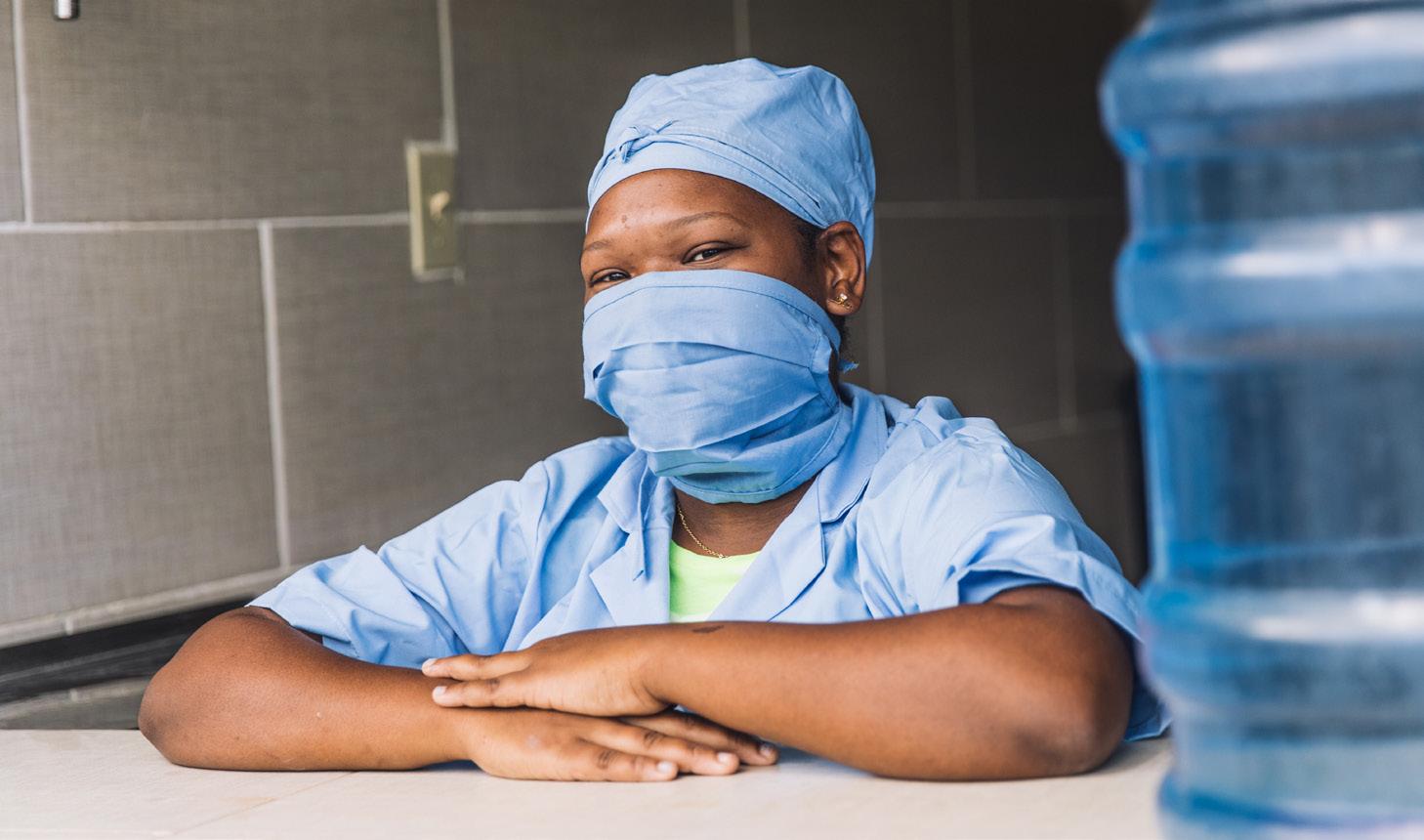
 WRITTEN BY: COLTON MARTIN
WRITTEN BY: COLTON MARTIN
This year the COVID-19 pandemic swept the globe without warning, triggering a health crisis unlike anything the world has seen for over a century. This virus does not discriminate between gender, class, or culture. Everyone has felt its effects.
But not proportionately. It is clear the pandemic and its aftershocks have a greater impact on communities struggling against material poverty. Higher density households and limited access to clean water and soap has made poorer communities struggle to stop the spread of the virus. When local and global economies came to a grinding halt this year, families living hand-tomouth didn’t have financial safety nets to fall into. As a result, a second, even larger wave is mounting on the horizon—a hunger pandemic.
In light of these realities, it would be reasonable to assume that FH Canada’s partner communities were crushed by this global crisis. After all, with so little in their pockets, how could they survive a pandemic that has brought the world’s most powerful nations to their knees?

We are happy to report that our communities appear to be totally “unreasonable.” While they have struggled and have had to dig deep, we have watched amazed as families come together to take a stand against COVID-19. Through creativity, personal sacrifice, compassion, and a prevailing sense of togetherness, they are showing the rest of us what it means to not only survive, but thrive in a pandemic.

Continue... 3 FHCANADA.ORG
COMING TOGETHER
If you peered down the streets of Acul, Guatemala during late July’s COVID-19 pandemic you’d see parents, kids, and elders preparing for the evening curfew. A father of three passes over a handful of beets and carrots to an elderly couple—both his hands clasped around the bundle of vegetables, careful not to drop any. The excess produce from his kitchen garden can't be sold at the market, which is closed due to lockdown. Instead it goes to the elderly couple next door.
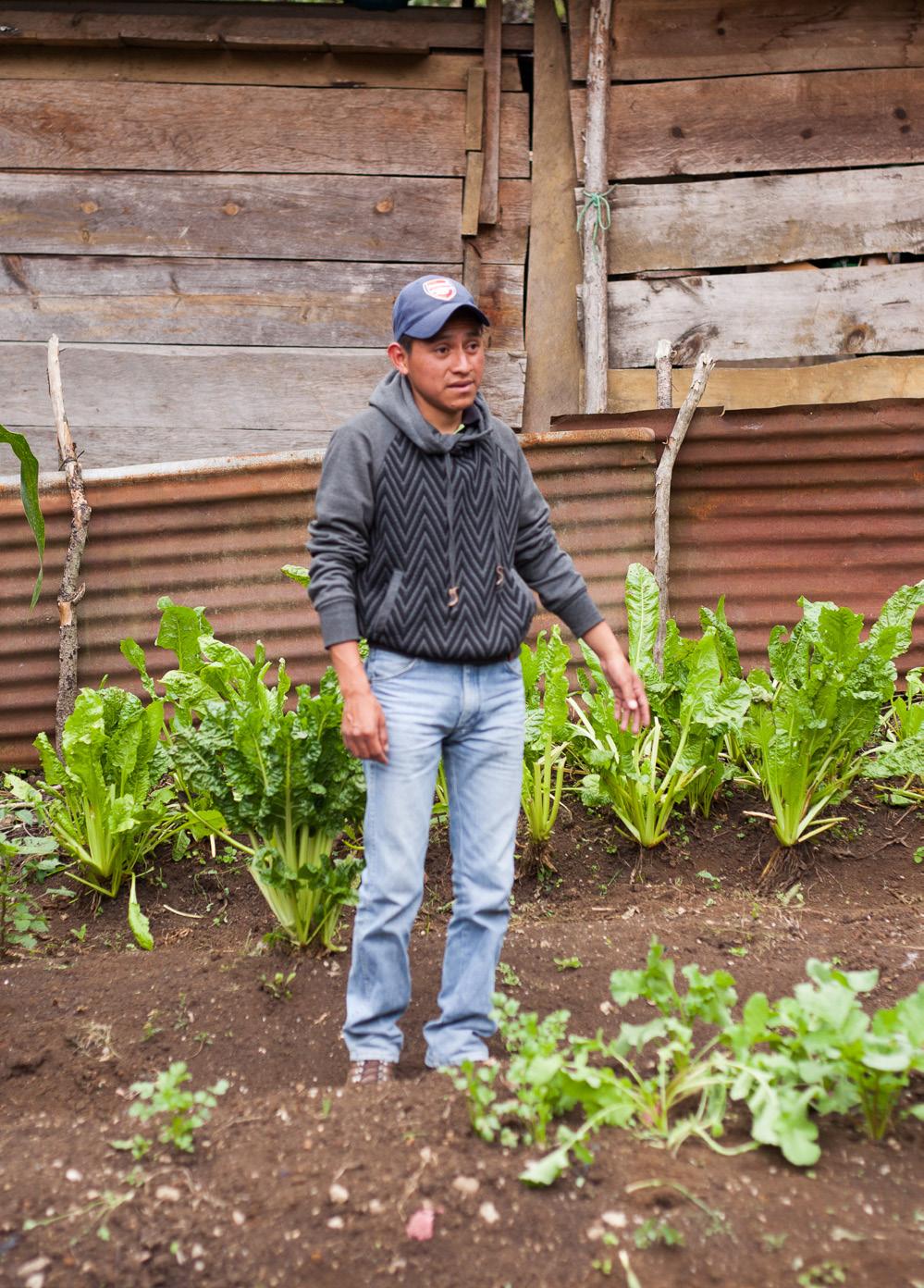
This is a picture of a community thriving in the midst of a global pandemic.
FH staff on the ground in Acul reported a change in the community since the start of the lockdown. As uncertainty for the future began to grip the community, so did a spirit of generosity, love, and care for the most vulnerable.
A DIFFERENT BOAT

You may have heard the quip “we’re all in the same boat,” in reference to all people across the world dealing with the impacts of COVID-19 together. The truth is, while the pandemic impacts us all, individual situations can be wildly different.
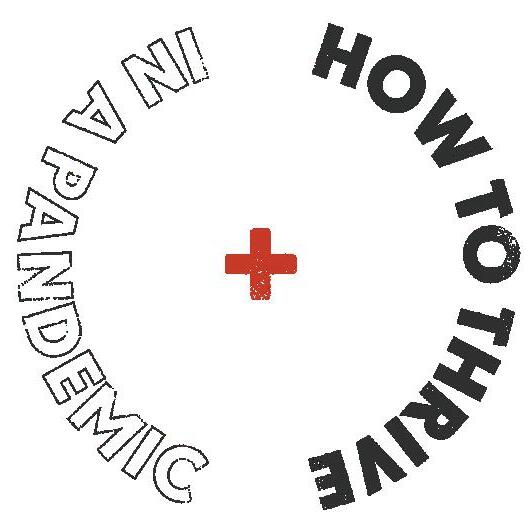
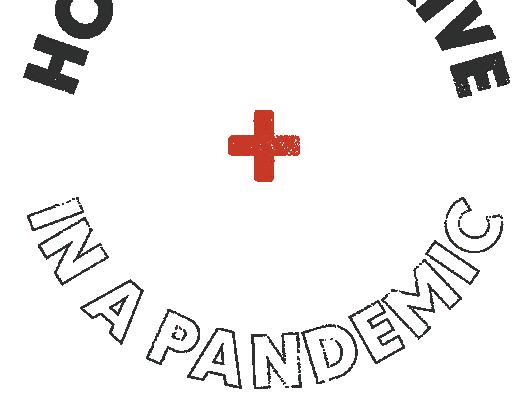

António Guterres, the UN Secretary General, observes, “It is a myth that we are all in the same boat. While we are all floating on the same sea, it’s clear that some are in superyachts while others are clinging to the drifting debris.”1
This analogy helps us picture how other communities struggle in a material sense. And it’s true—FH partner communities don’t have the same access to resources that we have here in Canada. But to say they “are clinging to the drifting debris” is not the whole picture. It leaves out the rare assets these communities already possess—their resilience, adaptability, and sense of solidarity.
1 Santos, J., 2020. Why We Can Still End World Poverty During Coronavirus. [online] World Economic Forum. Available at: <https://www.weforum.org/ agenda/2020/08/covid19-global-poverty?> [Accessed 2 September 2020]
THE FULLER PICTURE

The community of Busekera, Rwanda, challenges our assumptions of poverty within the pandemic. Busekera has its own share of worries rising from COVID-19. But what they lack in material wealth they make up for in grit, and generosity.


When schools and churches bolted their doors, when markets emptied and parents lost work, a fear of the future took hold of the small Rwandan community. But as the pressure for survival intensified, families began to show what they were capable of.
Silvestre knew there was no easy road ahead for his family. He knew if they were going to make it through the pandemic, he would need to apply himself. By joining a FH Savings and Loans group prior to the pandemic, Silvestre had saved enough money to buy a cow. Once his cow gives birth to a calf, he plans to give it away to a neighbour in need. By honing his agricultural skills at FH workshops before COVID-19 struck, Silvestre had made good use of his land and increased his crop
production. As a result, he’s spent the last weeks of lockdown passing on the same life-saving agricultural techniques to neighbouring farmers so they, too, can eat during the crisis. Silvestre explains, “I will never ever hesitate to share knowledge, skills, and experience with my community members.”
Silvestre is doing a lot with his simple resources. He is painting the fuller picture of his Rwandan community. There is more to Busukera than poverty and need.
A GROWING HUNGER CRISIS
There’s still a grim future forecasted for much of the developing world. A combination of war, political unrest, and famine made food security an issue for millions already. Now with the global pandemic, things have gotten worse.
David Beasley of the World Food Programme says, “Analysis shows that, due to the coronavirus, an additional 130 million
HOW TO THRIVE DURING A PANDEMIC HOW TO THRIVE DURING A PANDEMIC HOW TO THRIVE A PANDEMIC TO THRIVE A
HOW
THRIVE
TO
DURING A PANDEMIC TO THRIVE DURING PANDEMIC
DURING
PANDEMIC
HOW TO THRIVE DURING A PANDEMIC HOW TO THRIVE
A
PANDEMIC
“ ”
It is a myth that we are all in the same boat. While we are all floating on the same sea, it’s clear that some are in superyachts while others are clinging to the drifting debris.
— António Guterres, UN Secretary General
As uncertainty for the future began to grip the community, so did a spirit of generosity, love, and care for the most vulnerable.
Silvestre’s garden has been thriving since he began to apply the agricultural techniques he learned in FH training workshops.
Silvestre’s family tends to their new dairy cow together. Through Sylvestre’s hard work, he’s positioned well in his community. Not only will he have enough to eat, he will be able to share his cow’s future offspring with others in the community.
5 4 FHCANADA.ORG ISSUE 27
people could be pushed to the brink of starvation by the end of 2020. That’s a total of 265 million people.” Beasley warns, “There is also a real danger that more people could potentially die from the economic impact of COVID-19 than from the virus itself.”
How will FH partner communities weather this second wave?
STICKING TOGETHER
When FH starts walking alongside a community, they work with local leaders and families to reshape many of the values, practices, and way of living for the community. Teachers, pastors, and parents gather together, agreeing on what values they want to foster in their community. They come up with a plan to overcome their poverty and think of ways to weather the storms that life throws at them. Partner communities are proving they can get through a hunger crisis. To help, we may need to balance the urgency of global hunger with trust that communities hold tremendous potential to eradicate poverty. They just need help realizing that potential.
So how has Acul fared in the face of COVID-19 and the growing hunger pandemic? For Jacinta, a mother of three, and other families like hers, they have continued to tend their household gardens and care for their livestock which regularly give milk and eggs. For the most vulnerable families, FH supporters like you provided food care packages with essential rice, oil, beans, and salt. Much of FH’s programming pivoted to deal with the coronavirus crisis and its aftermath. If anyone in Acul worried about going without food, their community is postured to help one another.
It’s clear that the impacts of COVID-19 in North America are different from those in the developing world. A vulnerable family in Guatemala or Rwanda likely deals with obstacles greater than the average family in Canada. And it looks like they’re at a disadvantage for survival, like their resources may not stretch far enough. When you see the grit, creativity, and generosity of these communities, and the faithfulness of those walking alongside them, it’s evident they have what it takes to thrive in the face of crisis. As we chart these choppy seas together, we would be wise to follow the example of communities like Acul and Busekera, who rely on each other when times are tough.


Jacinta's husband left the community in search of employment, meaning she must raise their three children on her own. Her new seedlings from FH will grow to keep her family well-fed as the coronavirus continues to affect the livelihoods of those living in Acul.
2 Beasley, D., 2020. WFP Chief Warns Of Hunger Pandemic As COVID-19 Spreads (Statement To UN Security Council) | World Food Programme. [online] Wfp. org. Available at: <https://www.wfp.org/news/wfp-chief-warns-hunger-pandemic-covid-19-spreads-statement-un-security-council> [Accessed 2 September 2020]
3 Ibid.
4 Ibid.
HOW TO THRIVE DURING A PANDEMIC TO THRIVE A PANDEMIC TO THRIVE A PANDEMIC HOW TO THRIVE DURING A PANDEMIC
partner
6 ISSUE 27
To read stories about how FH partner communities are facing the pandemic, visit blog.fhcanada.org To find out how you can
with FH communities as they work to overcome COVID-19 setbacks, visit www.fhcanada.org/feedingfamilies
MEET MAO KRENG
Interview by Chorn Keonghao
Written by Eryn Austin-Bergen
Mao Kreng is a survivor. He was just 21 years old when the Khmer Rouge—a homegrown political movement—seized control of Cambodia. Over the next four years, he watched as a quarter of his countrymen—his friends, neighbours, and family members—died from disease, starvation, exhaustion,
or execution. It is estimated that between 1.7 and 3 million people lost their lives under the Khmer Rouge between 1975—1979.
At age 25, Kreng lived through Vietnam’s invasion of Cambodia that drove the Khmer Rouge into a jungle insurgency, triggering two bloody decades of civil war. While the 2000s brought a measure of stability, the people continued to struggle. Survivors like Kreng lived alongside perpetrators of the war and a deep-seated mistrust permeated the culture. Little was done to help the traumatized (on both sides) process the atrocities they had experienced.
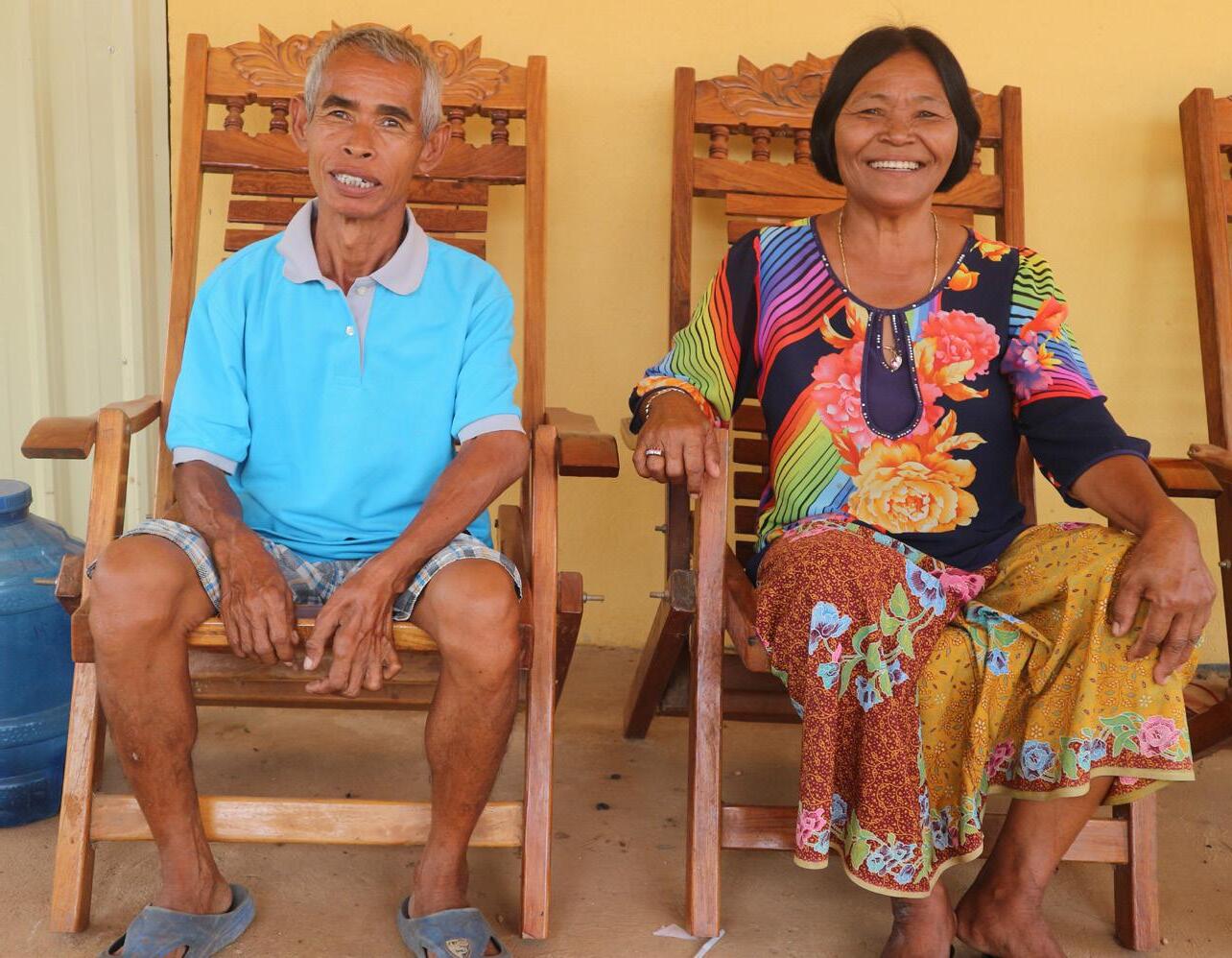
Now age 66, Mao Kreng is courageously opening a new chapter on life for himself and his community. A leader on his village’s development committee, he is helping his community heal, rebuild trust, and prepare a future for their children full of hope and free from fear.

“As far as I can remember, a long time ago, we [community members] had a good relationship with each other. There was solidarity and trust. Then along the way, because of hard life, we lost these and we broke our relationship and minded our own business to survive day-to-day.

I was a victim of the Khmer Rouge. My hand was shot during the war.
My and my wife’s source of income was farming. We used our traditional way of planting and raising animals, but we always fell short in our harvest. We survived, but not a good [survival] because we could not help others.
I had a big role in the community, but I wasn’t a good role model—I seldom attended meetings and activities in the village. I didn’t have a good relationship with the people because I had no self-confidence and was a little aggressive. If I had ideas and opinions, I liked to insist it to be right; I was not open to the ideas of others. I focused on the needs of my family only and I forgot that as a leader I had to think of what was good for the community, especially the families who needed help.
When FH entered my community, they started to re-establish our Community Development Committee (CDC). It was there before but was not functional. I was selected to be in charge of agriculture and learned new techniques [from FH] to help encourage other farmers like me to improve our production. Some of these included fish raising and home gardening. I attended [FH] training sessions on how to become a good leader, from our roles to the characteristics of being a servant
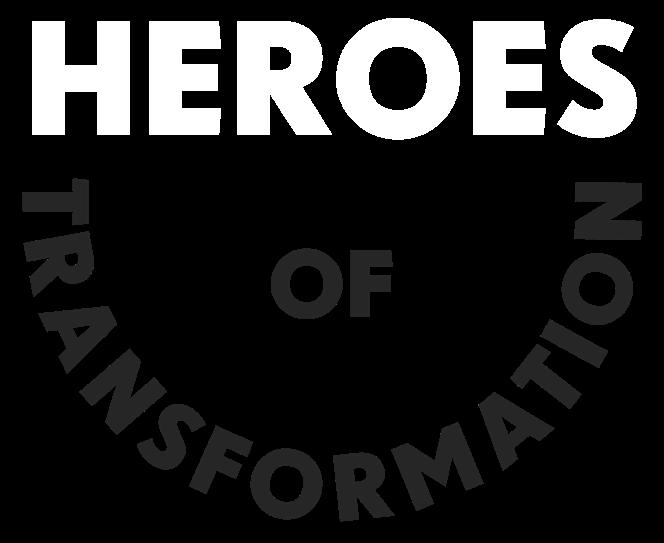
7
“I am also happy because I see my wife happy. She always smiles and encourages me. We strengthen our relationship as husband and wife.” — Mao Kreng
leader. When I learned about the character of a good leader, I realized that is the kind of leader I wanted to be.

We created a regular schedule for our quarterly/semi-annual meetings to discuss issues in our community and as leaders, how we can help develop it. We set our priorities and decided as a team to put them into action. We successfully planned to build two more roads so that people can travel easily in and out of our community. We encouraged our community to form savings groups and now we have two. We built our meeting hall and made a beautiful learning space for our children in their children’s club. We have a [tree] nursery; the trees will be planted on the roads to provide shade to people when they’re traveling because during dry season, it’s very hot. We have solidarity and regained the trust that we once lost.
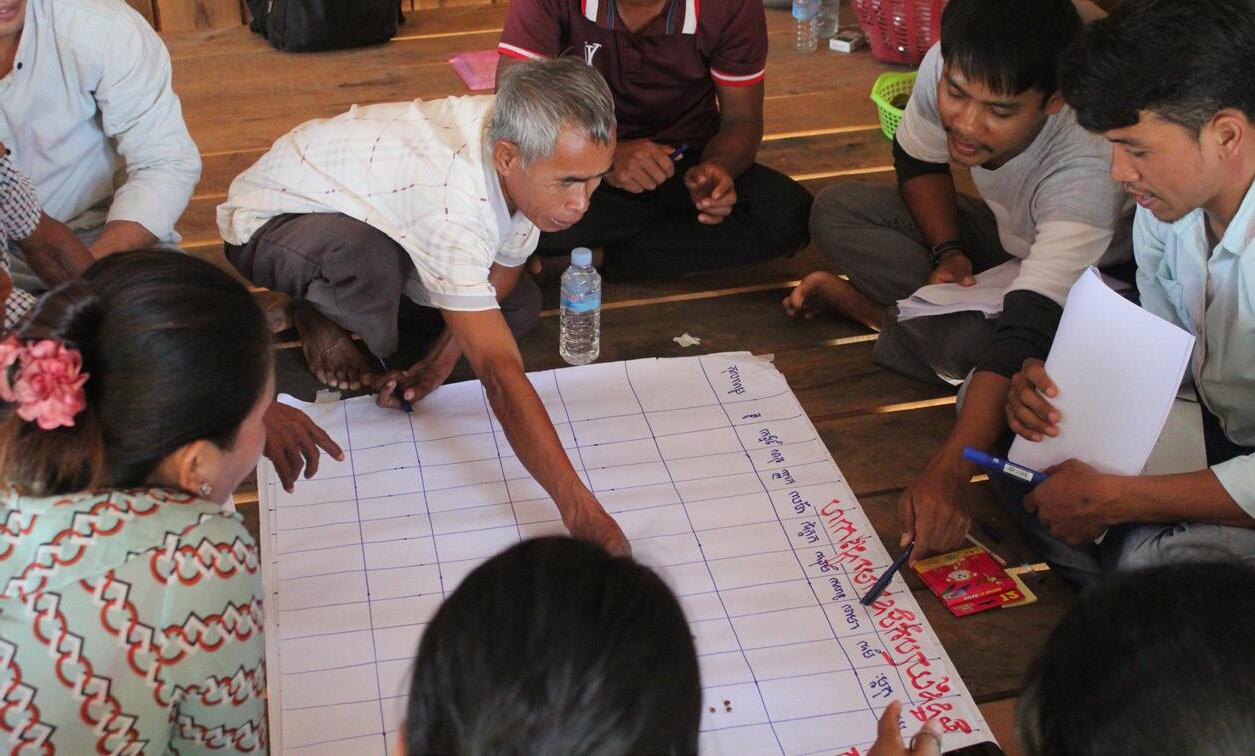
“I improved a lot, especially my mind set. I’ve become more open and share my ideas and listen to others, too. With these changes, I feel the people around me value me as a leader. I feel the same way toward them. I value them and I can say that I love them, and I love being of service to them.
“My wife and myself [now] have more than enough. We have a good harvest from our garden. Since we are old, our bodies are very particular with the kind of food we eat; now we can be assured that we eat healthy food because we use natural pesticides and compost in growing them. I’m inspired to see other people in the community having a sustainable livelihood. We care about each other and the things happening in our community, especially to the children. We’re all learning together. I am really happy because I became the leader that I hoped to be.”
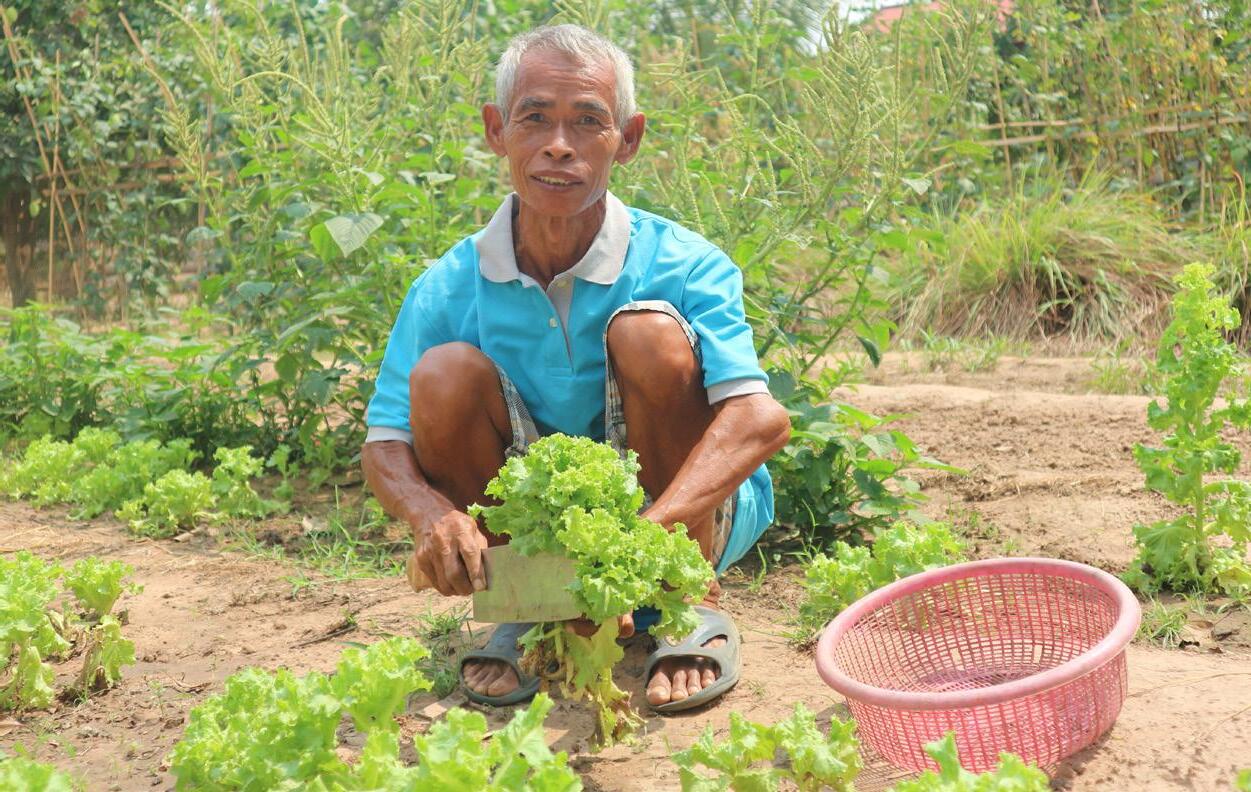
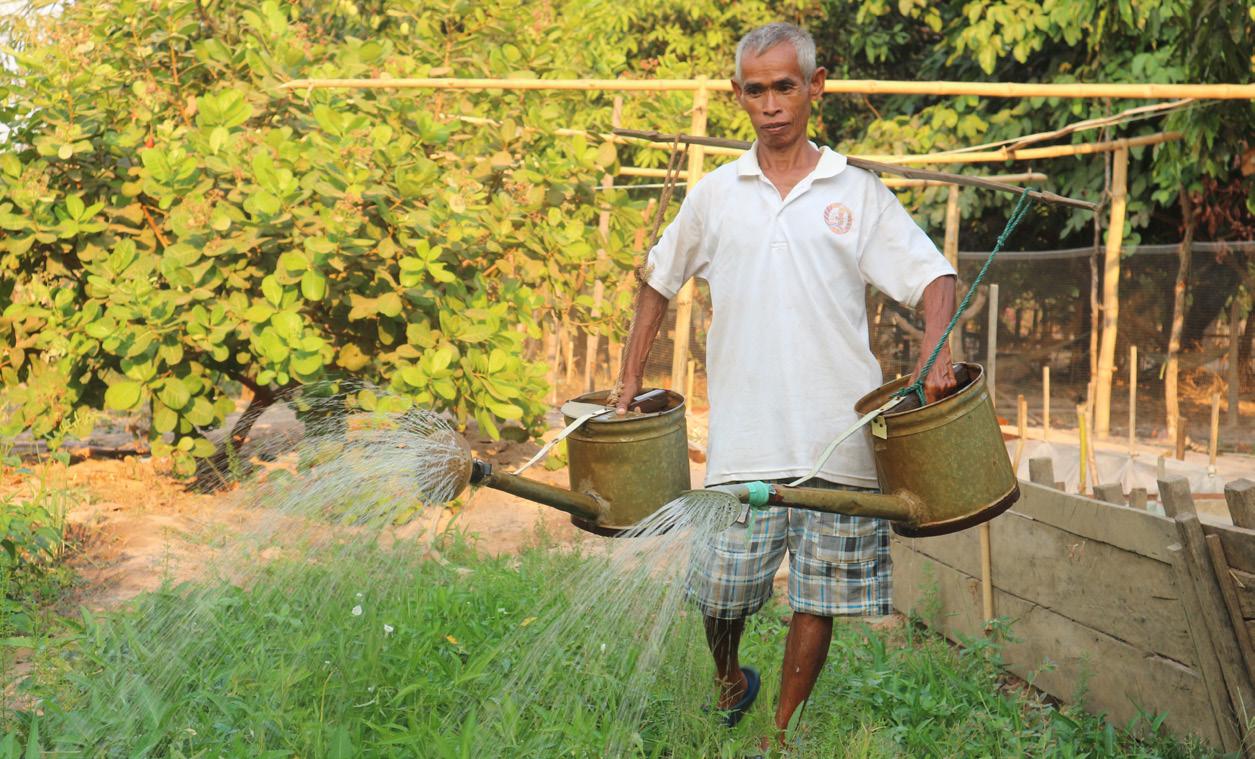
“I
in
I
” ” “
Mao Kreng and his wife enjoy eating the abundance from their garden and sell the delicious organic produce as their main source of income.
From fishponds to lush gardens to tree nurseries, Mao Kreng is using the knowledge he gained through FH workshops to cultivate flourishing in his community.
In spite of having stopped school after Grade 8, Mao Kreng is a thoughtful and intelligent leader. After confidence-boosting leadership training with FH, he’s no longer hesitant to discuss ideas with his fellow CDC members.
actively participate
the events in the community. …Even if
am old already, I am willing to do it.” Mao Kreng helps erect a creative fence for the village’s children’s club.
I am really happy because I became the leader that I hoped to be… We’re all learning together!
8
— Mao Kreng, Cambodia
Who Do You Trust With Your Money?
Written by Eryn Austin-Bergen
After six years of reading FH Canada partner community reports, I am crazy about Savings and Loans groups. Here’s why.
Have you ever felt like you don’t make enough money each month to put anything substantial into a savings account at your bank? Occasionally you try, but your budget is so tight that after shelling out for rent, utilities, food, insurance, and gas you hardly have a toonie leftover. On top of that, there’s always some unexpected expense to charge to the credit card, like unplanned car maintenance or replacing a lost or broken phone. My point is, at the end of the day, what’s the use of putting anything away for a rainy day when it feels like it’s pouring everyday?
Families struggling under the weight of material poverty feel this same pressure, but times a million. A mother who can’t feed her children three meals a day is going to look at you like you have two heads if you suggest she relinquish even a few precious coins to any kind of savings scheme. She needs that money today, not tomorrow!
And yet, time and again, families in FH partner communities demonstrate that developing a “savings culture” is critical to their success in breaking the cycle of poverty and establishing their economic resilience. Take Julienne, for example.
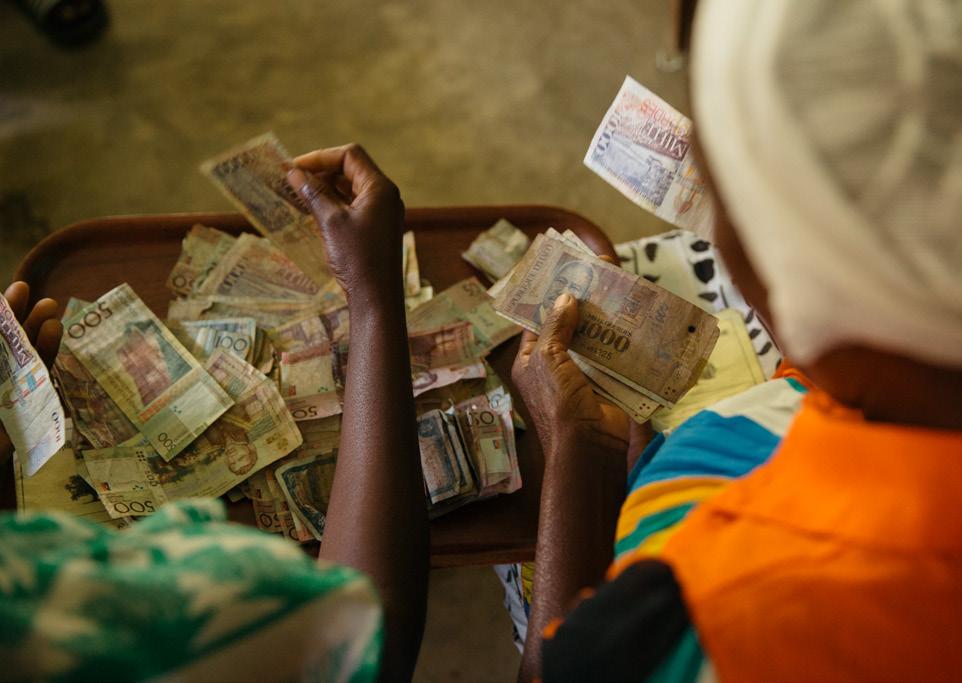
“Before FH started working in our community, I couldn’t do anything to make an income for myself,” she says. Julienne is a widow and a mother living in Burundi. Crippled by a high cost of living, she was
forced to use all of her income to daily support her small family. There was no social assistance or free healthcare. If a crisis were to strike, she would have little margin to recover. Julienne knew she needed to save in order to create a future for herself and her son, but she didn’t know how to start. Fortunately, an FH Savings and Loans group opened up in her community and she joined. “I started saving and after some time I reached a point where I was able to request a cash loan. I took a loan amounting to 210,000 BIF ($150 CAD) from my savings group that I used to purchase a sewing machine.” While there’s still a lot of work to do every day, Julienne now has multiple sources of income to support herself and her son. “When I am not farming, I use the machine to sew clothes for my community. This allows me to earn money daily and earn a better life as well,” says Julienne.
I’ve come to believe this relational approach to wealth creation might be critical to my “earning life” as well.
9 FHCANADA.ORG
Here’s what I mean. We live in a “spending culture.” The message is strong and constant: “Buy now, not later! You want this, you need this, you deserve this! Don’t have the cash? No problem—finance it and worry about the payments later. Why? Because your happiness depends on it!” Day in and day out, the hounding never stops. But is this system really working for us or is it enslaving us to debt and anxiety?

To the contrary, a “savings culture” empowers individuals, groups, and communities to accumulate assets together. It empowers mothers like Julienne to feed her children three meals today and have cash on hand to pay for school fees, medicine, clothing, and those unanticipated rainy days that may come tomorrow.


FH promotes a savings culture primarily through organizing and training Savings and Loans groups. The concept is pretty simple—a group of people (often 10-12) from the same community meet regularly to pool their savings in order to create capital they take turns leveraging. While the weekly amount put in by individuals may be small, their combined savings quickly accumulates. FH staff train the group in financial literacy, savings
practices, and small business management. Thorough training at the beginning and ongoing coaching for the first few years are critical to laying a strong foundation that will help sustain the group long after FH exits its partnership with the community.
In addition to training, FH also provides each group with a "Piggy Bank" starter kit which includes a secure lockbox, ledger, and accounting books—but no cash inputs. (This is one way in
which Savings and Loans groups radically differ from popular microloan schemes for the poor.) The group (not FH) elects their leaders—members they choose to record savings, loans, and interest. Members borrow from the group to make onetime payments for items such as school uniforms or medicine, or to invest in long-term ventures like land, small businesses, or livestock. As a result of these initiatives, new wealth is brought into the group from outside the community through collaborative markets, roadside businesses, and livestock auctions, among others. Borrowers are faithful to regularly contribute their savings and pay back their loans to the group at low-interest rates. At the end of a "cycle"—often one year—each member is paid out their savings (with interest!) and can choose to keep or re-save the money in the new cycle.
Over time, the group becomes totally independent of FH trainers. In addition, groups often set up a “solidarity fund” to which they each freely contribute. When crisis strikes someone in the community—a child falls ill, a house burns down— the group gives a financial gift to the affected family. In this way, they selflessly contribute to the wellbeing of the whole community. By opening access
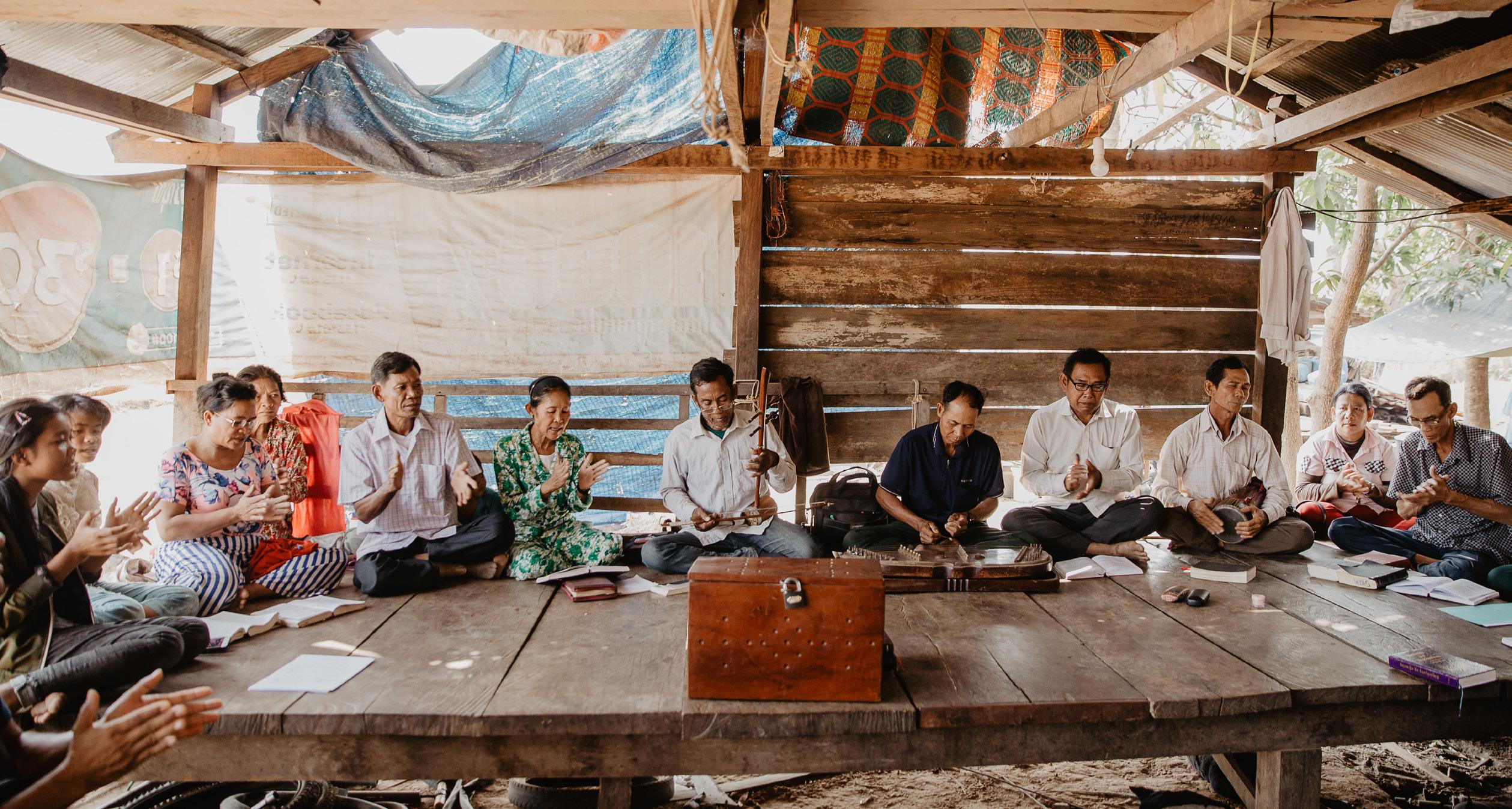
11 10 ISSUE 27
Because of her Savings & Loans group, Julienne was able to purchase a sewing machine, allowing her to unlock her business potential. Using the money she profits from sewing projects, Julienne will pay back her loans, offering someone else in the community an opportunity to take on a new business venture.
FHCANADA.ORG
to the practices foundational to creating wealth, this entire process gives agency to people who once felt powerless over their poverty.
The resilience of Savings and Loans lies in its interconnectivity. Decisions are made together, strengthening the group’s resolve to see each member thrive—when one member succeeds, everyone benefits! When one member struggles, everyone feels their pain. The group walks together through each other’s ups and downs, through risks and failures and wins. They cheer each other on and lend a helping hand when needed. The financial transparency of the group also helps hold borrowers accountable in a healthy way. If a member squanders their loan, doesn’t contribute savings, or fails to repay what they borrowed, they’re not holding out on some stranger thousands of miles away; they’re hurting their neighbour, their friend.
Being financially connected in this relationally intimate way is something quite foreign to me. I’ve never sat down with a group of friends or
neighbours to discuss my money—my income, my expenses, my debt, my savings, my dreams for the future. In my social experience money is an offlimits topic.
But should it be? Isn’t it a little strange that we’re willing to entrust our finances to perfect strangers at the bank while resisting transparency with people who know and love us, whose own good should be wrapped up in ours? Wouldn’t we get further if we went together? Instead of pursuing financial independence, perhaps we should be after financial resilience by embedding ourselves in a relational, interconnected approach to wealth creation.
Imagine if a group of 11 friends encouraged you every week to put $10 in the pot instead of purchasing things (or experiences) you can’t afford. At the end of the month, you’d have $40 on your own, but access to $480. After one year of saving together, you would have accumulated $520 of your own money and have gained access to $6,240 lowinterest credit for dreams that matter. And what if, together, your group watched financial literacy videos or invited experts to teach you about starting a small business or cutting unnecessary expenses? What a relief to know you’re not doing it alone! How empowering to say “no” to our spending culture and help your friends reach their dreams.
I know Savings and Loans groups are not the silver bullet to ending poverty—not in overseas communities or in my own life. But I’m still captivated by the alternative, relationally oriented approach to financial resilience they offer. One that’s built on assets, transparency, trust, empowerment, and, ultimately, friendship. Whether we replicate such groups in our own Canadian communities or create a hybrid within our current financial system, I think it’s worth considering how far we could go if we went together.
12 ISSUE 27
LANDSCAPING FORTHEKING LANDSCAPING FORTHEKING
Interview by Mike Janz
Living Stones Inc. is a 15-year-strong landscaping company based on Vancouver Island, co-founded and co-owned by Ryan Politano. Through a partnership with FH Canada, Living Stones staff are sponsoring children in Acul, Guatemala and taking annual staff trips to visit them.
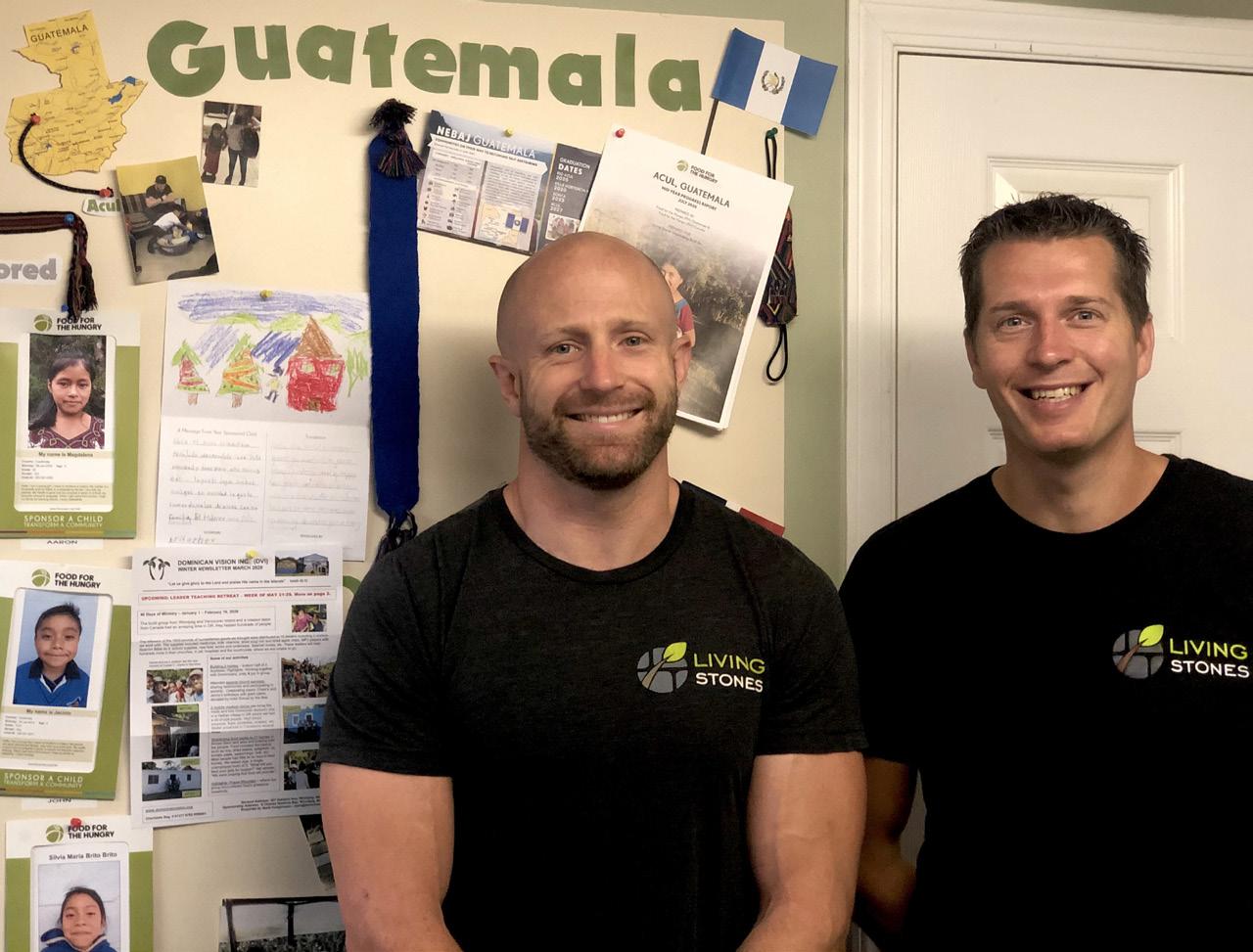

MJ: Ryan, tell us what it means to you to be a business owner who is also a Christian.
RP: This is one of the questions that is closest to my heart. The heart attitude and humility shown by a business owner who is a Christian ought to set their business apart in the way they treat others—employees, suppliers, and clients. The aim is to love others like Jesus loves. That is a high calling. I don’t always live up to it, but I want to.
MJ: How do you see those Christ-like practices integrated into the daily work life of Living Stones?
RP: We are a for-profit landscaping business, but the ultimate goal is not to make the owner or shareholders wealthy; it is to advance the kingdom of God. Whether employees are Jesusfollowers or not—Jesus’ call to love our neighbours as we love ourselves is just a part of our culture. And that has to happen every day on the job site with our clients. It has to happen every day in the office with estimators and admin staff. It is an integrated part of how we do all of our work.
MJ: What role does partnering with a community and child sponsorship play in that call to love your neighbours?
RP: During staff meetings, I just invite [the staff] to be a part of what we're doing globally. I mention the opportunity to visit Guatemala as a core part of our company. I say “Look guys, this is the heart of what we are about here at Living Stones. It might not look or feel like it when we are out installing trees, laying paving stones, or building retaining walls…but really it is one of the reasons why we exist—to make an impact in this world locally and globally for the kingdom of God.”
“[While on a team trip to Acul, Guatemala] this pic was taken after a ceremonywherewewerehonouredbythestudentswithgiftstheyhad made for us—I almost cried.” - Ryan
WouldyouliketoexplorewhatapartnershipwithFHCanadamight look like for your business? Learn more at fhcanada.org/partner or email partnerships@fhcanada.org to start the conversation!
Ryan Politano and business partner Deen Krol are excited for their landscaping team’s passion for sponsoring children in Guatemala.
"
" one of the main reasons this business exists is to make an impact locally and globally for the kingdom of god.
— ryan politano, president of living stones inc.
13 ISSUE 26
UGANDAN Mandazi Ethiopian HISBIST
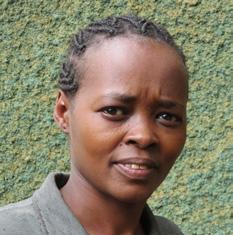

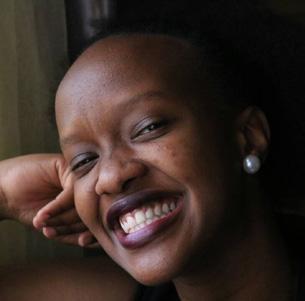
Familiar looking treat, eh? Mandazi is sold on every street corner in Uganda for a few hundred shillings—about $0.15—each. It’s common around East Africa as a preferred bite-size sweet-and-scrumptious snack enjoyed with hot beverages such as tea, coffee, and hot cocoa. Deep-fried dough never disappoints!
INGREDIENTS
• 2 cups flour
• 4 tbsp sugar
• 2 tbsp baking powder
• Pinch salt
Daphine
• 1 tbsp margarine
• 1 cup milk
• Zest from 2 lemons*
• 3 cups vegetable oil
*consider substituting your own favourite flavour
INSTRUCTIONS
1. Sift together flour, sugar, baking powder, and salt. Grate lemon rinds into zest and add to flour mixture. Stir in milk and margarine. Mix thoroughly with a wooden spoon until thick, then work with your hands into a soft dough. Add small handfuls of flour as needed until the dough no longer sticks to your fingers. Knead until smooth.
2. Roll dough into smooth balls slightly smaller than a golf ball. Pinch together folds or cracks in the dough.
This relatable treat’s recipe was submitted by Daphine Nkunda, who is interning with the FH Uganda Communications team.
3. Pour 3 cups of oil into a 3 quart pot and heat over medium high heat on the stove. The oil should be hot, but not a rolling boil. Test by putting a dry wooden spoon in the oil—if bubbles sizzle gently around the spoon, the oil is hot enough.
4. Once the oil is ready, gently add dough balls to the oil. Do not overfill the pot; give the dough room to cook so they don’t stick together. Fry each batch for about 6-8 minutes until slightly expanded, golden brown, and cooked through the centre. If the dough balls darken quickly, the oil is too hot. When cooked, remove the doughnuts to cool and dry on paper towels for 5 minutes.
5. Serve fresh with tea or coffee. Can be topped with sugar, jam, or other confectionary toppings. Makes 20 mandazi.

Across Ethiopia, Hisbist is a special yet staple bread prepared for large gatherings marking almost any special occasion—birthdays, weddings, graduations, or hosting special guests. It ain’t a party without Hisbist.

And what better way to feed a crowd while helping guests feel at home than with fresh bread? The original recipe served 15 people and called for 24 cups of flour and over two litres of water! Traditionally it’s prepared by wrapping the dough in banana leaves and steaming it in huge iron pots over an open fire.
INGREDIENTS
• 1 cup warm water
• 1 tsp yeast
• 1 tsp oil
• ¼ cup milk
• ½ an orange, juiced
The following recipe was adapted from a recipe by Tenagne Belete and Getnet Girma, FH Ethiopia staff members living among and walking with families in the community of Sasiga, Ethiopia.
• 1 egg
• 1 tsp salt
• ¼ cup sugar
• 1 tsp baking powder
• 3 cups all-purpose flour*
*for whole wheat bread, substitute 1 cup all-purpose with whole wheat
INSTRUCTIONS
1. In a large bowl, combine warm water and yeast. Then add oil, milk, orange juice, and egg. Mix well. Add salt and sugar. Let rest for 30 minutes while the yeast activates.
Getnet Looking
2. In a separate bowl, mix flour and baking powder. Add to yeast mixture. Mix well and knead for 5-10 minutes, adding small amounts of flour until dough is soft and only just stops sticking. Cover dough with a damp cloth and let rise for 2.5 hours.
3. Fill a large sauté pan with water, an inch deep. Move the dough into another non-stick sauté pan of the same size, cover with a lid or foil, and place over the first pan suspended over the water. Bring water to a boil so the steam starts to evenly heat the second pan and slowly steam bake the bread. Keep the water on simmer, and watch that it does not boil over or boil dry. Steam for 75-90 minutes, until the bread is no longer sticky to the touch.
4. Makes one large round loaf. Serve with tea.
Tenagne for authentic step-by-step instructions with photos? Want to see how a family in Ethiopia prepares a loaf large enough to feed 15 people? Visit blog.fhcanada.org FHCANADA.ORG 15 14 ISSUE 27
ChangeDelivered
Many in FH communities have the work ethic, grit, and mindset of people ready to break away from poverty. They just need a small spark to get their fires lit. That’s where YOUR gifts come in! Thanks to generous Gift Guide donors like you, families across the globe are transforming their communities and creating a new future for their children.
Even as the COVID-19 pandemic continues to plague our world, FH partner communities are coming together to share food, supplies, knowledge, and finances to make it through. Your past gifts planted gardens, established livestock, and launched businesses that are now supporting families through this unprecedented difficulty. Thank you!
Fruit & Veggie Seeds for Getahun
Have you ever heard the adage, “Good things come in small packages”? For Getahun, that couldn’t be truer. Getahun and his family live in Galo Janja, a rural community in Ethiopia. They depended on cultivating cereal crops to provide for themselves, but their farm stopped producing enough to support them. The future looked bleak.
Then someone like you sent them a very small package. What spilled out of it? Tiny, precious, life-changing seeds! At the close of FH’s vegetable production workshops last year (2019), Gift Guide Fruit & Veggie Seeds were pressed into Getahun’s eager hands. Excited to try something new, he planted the seeds and applied the techniques he learned from FH. And they worked!
“In this first harvesting season, we consumed vegetables to be estimated at 2500 Birr (nearly $100 CAD). I could also sell 10,000 Birr (nearly $400 CAD) [of vegetables],” Getahun excitedly recounts. “My family enjoyed eating a variety of fresh vegetables. With the income I got from the sales, I bought 14 traditional beehives and am working on honey production. For the future, I plan to extensively work on both vegetable and honey production to boost my income and give my family a better life.”
Thanks to Gift Guide donors like you, Getahun got the fresh start he needed to create a flourishing future for his family.
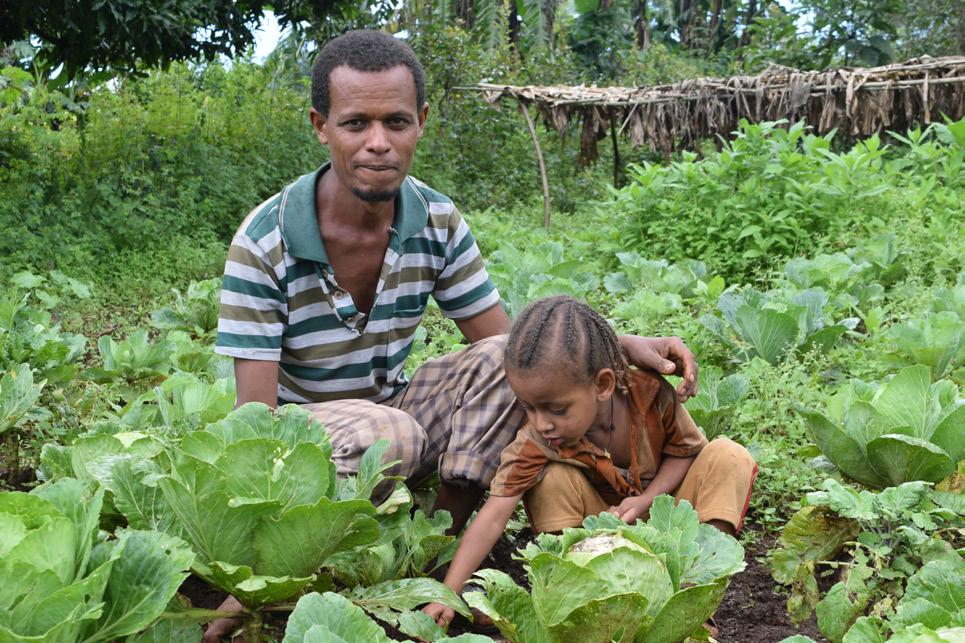
A Dairy Cow for Mathias
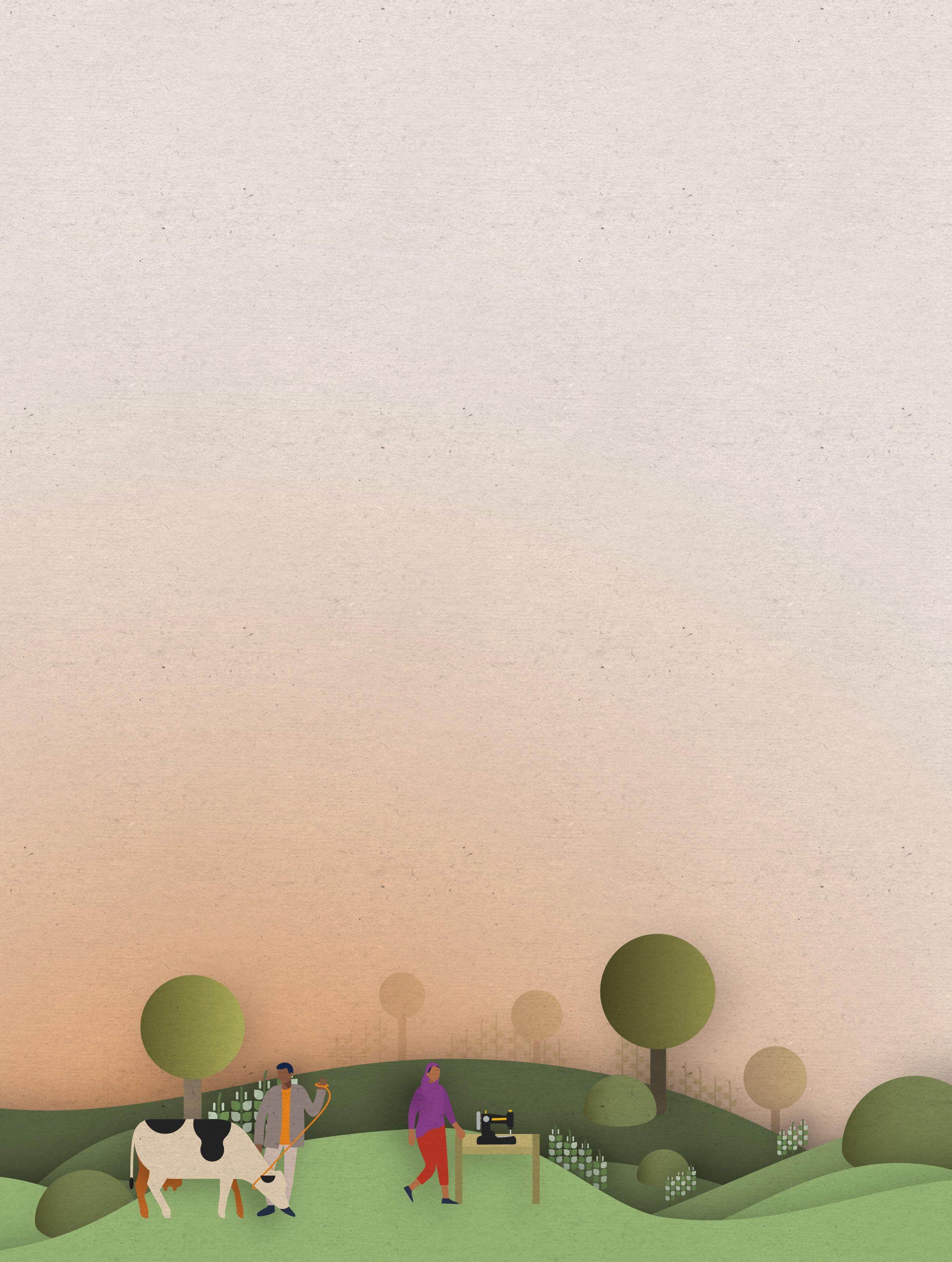
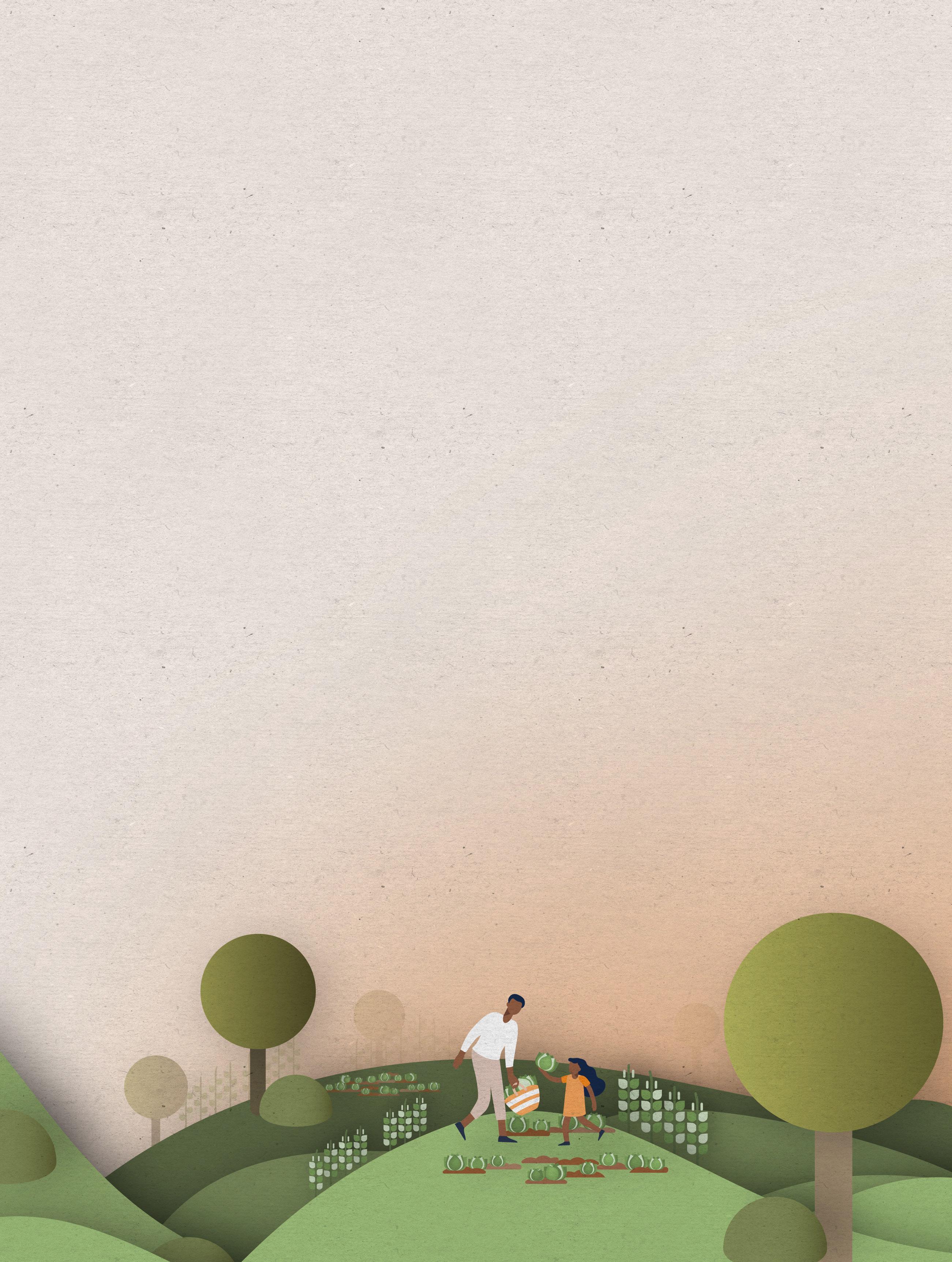
Mathias has lived most of his life in Kabarore, Burundi as a subsistence farmer, growing just enough food to make it to the next harvest. As a father of four, the stress of always living on the brink of hunger weighed heavy on Mathias. So, when the opportunity came, he was eager to learn new FH farming techniques that promised healthier soil and better yields. Soon, he was producing more fruit and vegetables in his garden than ever before while actually making his land more fertile. His neighbours quickly noticed and began copying his techniques. “People are adopting restorative agriculture techniques and increasing vegetable production!” Mathias beamed.
While he was excited to be able to provide for his family, Matthias wanted to take it to the next level. He joined FH’s Dairy Cow program funded by Gift Guide Dairy Cow purchases. As a result, Mathias now has his own calf that will provide him with income to grow his herd, manure fertilizer for his garden, and eventually milk for his family and for sale. Mathias explains, “I will keep my own cow that will reproduce, and I will give another one [calf] to another [family in need]. I am already benefiting [from] manure for my gardens.”

By sharing knowledge and gifting cows to their neighbours, the people of Kabarore are taking your generous gifts and working together to end poverty and build a thriving future for themselves. “I feel very happy and thankful for FH and am filled with hope for a bright future!” exclaims Mathias.
A Piggy Bank for Shewly
Abdul abandoned Shewly and their six daughters (ages 2–16) to marry another woman, leaving her with no savings, child support cheques, land to cultivate, or small business to run. In rural Bangladesh, Shewly was soon desperate. Joining a Savings and Loans group supported by Gift Guide Piggy Bank donations rescued her. In her group she gained the skills, confidence, and access to resources she needed to open her own sewing business and snack shop. Beyond the practical support, Shewly discovered in her group, a place where they could encourage and help one-another. Together, they participated in discussions on health, women’s and children’s rights, and values. Through this process, Shewly changed. She shares, “I realized that I need to stand firmly to deal with these daily struggles and find a source of income.”
Thanks to generous Gift Guide donors like you, Shewly didn’t take on unbearable debt or marry off her underage daughters as child brides to ensure their survival. Instead, she leaned into her community. Shewly shares, “We have formed savings groups so that we may solve our own problems by uniting everyone in the society. Child marriage has significantly decreased. FH works to increase self-sufficiency of the people who [are] left behind. FH trained me in a way that I may depend on my earnings. Many of my misconceptions have changed. Now I manage raising my family by earning money. I am paying for my children’s education.”

GIFTS FOR CHANGE
17 16 ISSUE 27 FHCANADA.ORG
G IFT G UIDE
What do you like most about your community?
“I am thankful I was born in this beautiful community–we have land where we can grow our own food, and we fight to survive. God has blessed us because we harvest corn twice a year, we plant beans, tomatoes, pumpkins, oranges, sugar cane, peaches, custard apples and coffee–this is what I like about this beautiful community.”
What do you love most about your country?
"I
“I like to see the mountains—in the community we have some beautiful landscapes. But what I like the most is the unity and warmth in families.”
Tucked away in the remote valleys of north western Guatemala lies San Juan Cotzal. Its mountainous region and foggy, pine-forested slopes are home to a cluster of nine communities: Los Angeles, Tixelap, Quisis, Chichel Chisis, Santa Avelina, Ojo de Agua, Vichibala, and San Felipe Chenla.
Predominantly an indigenous population, families have farmed and traded along Cotzal’s dales for possibly centuries. Their history and culture runs through intricately woven clothing, love of traditional music, spicy foods laden with chiles, and a distinct language–the Ixil language–that sounds nothing like the national language of Spanish.

But behind the idyllic scenery and smiling faces, a history of trauma exists. The brutal civil war that spanned 36 years (1960-1996) and killed more than 200,000 people continues to disproportionately affect rural indigenous communities. Oppression and tragedy have families stuck in cycles of poverty.
At the start of 2019, the communities of Cotzal rallied with FH and began their 10 year journey towards graduation from poverty. The first stages of partnership are patient ones; FH staff take time to listen and build strong relationships with leaders, teachers, parents, and pastors. These first steps are not glamorous–schools and water wells aren’t erected quickly, nor may be what’s actually needed–but these steps are foundational to stimulating change that will last. It’s about taking time to be unified over the right solutions. Together they identify what’s at the root of their poverty, focus on where they are strong, and form a plan for vibrant, resilient communities.
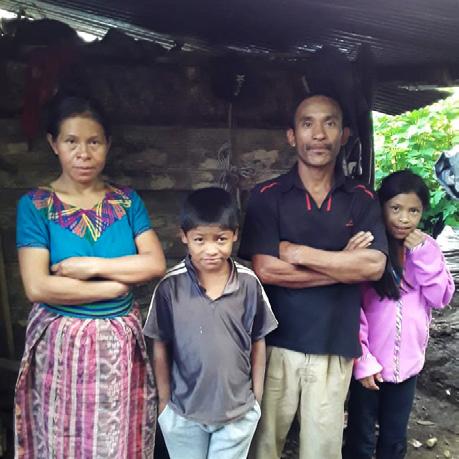
So, get to know Cotzal! Families there are proud of their community and are excited for transformation as they begin their journey from stuck to thriving.
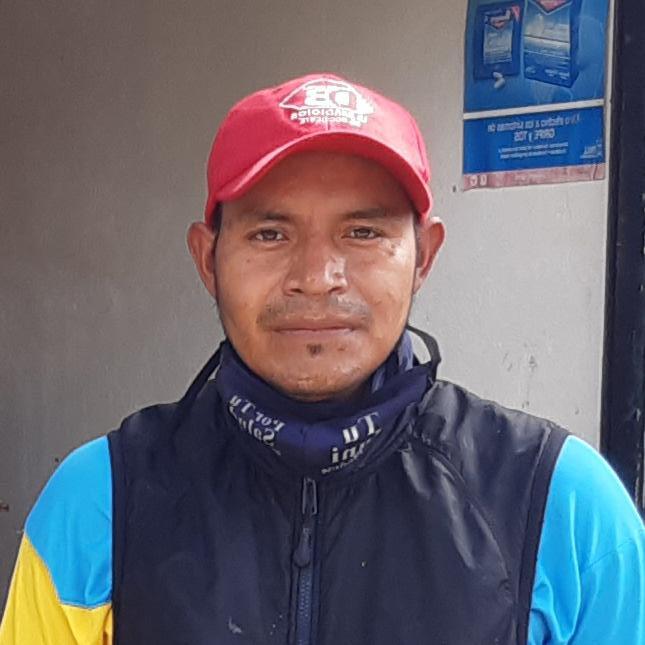
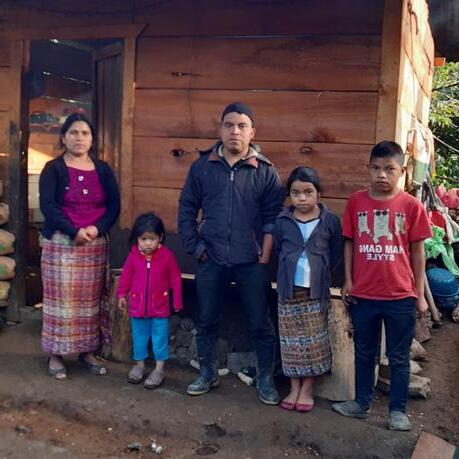
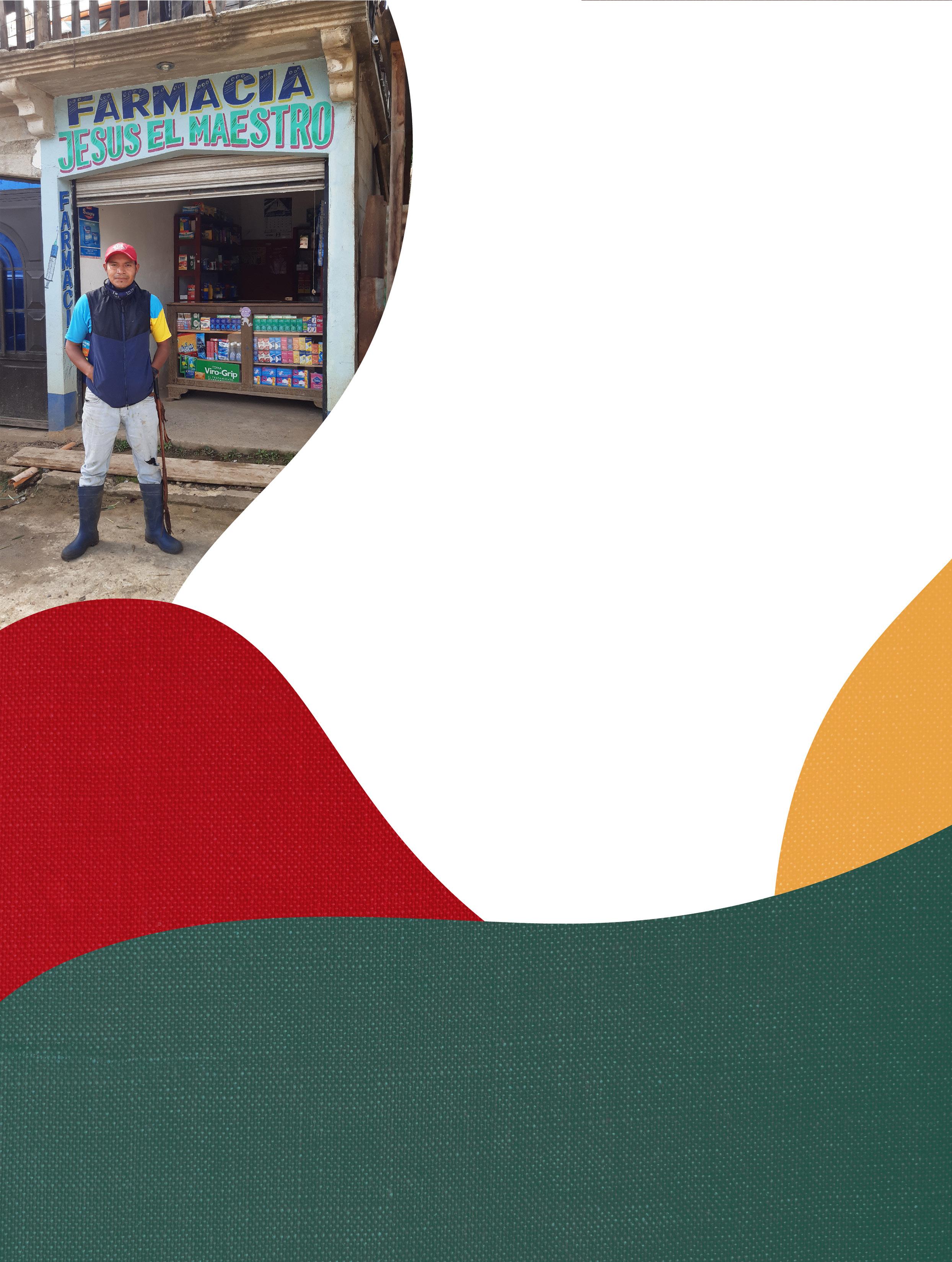
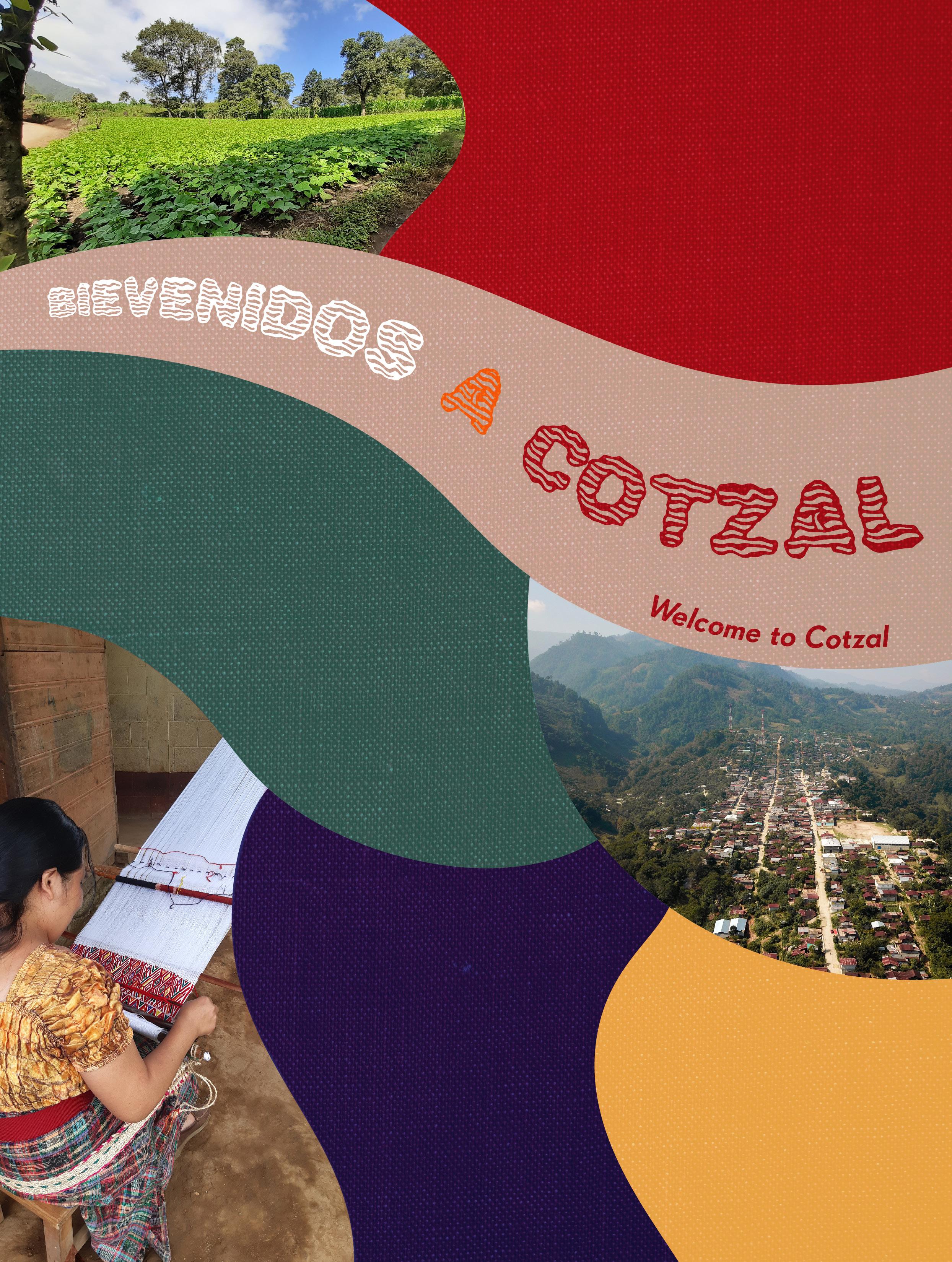
What is a "normal" day like for you?
“Getting up every day, cleaning the house, preparing food, going to the field to collect some firewood and taking care of the children–that is our day to day. Sundays are usually when we can spend more time together as a family, preparing the food for Sunday lunch, and sometimes we going to nearby places, to have a little fun with the children.”
— Ana Toma Rodríguez, Ojo de Agua
— Gaspar Gómez Córdova, Chichel
love that it is a country where there are people who are eager to move forward; that we have beautiful landscapes such as rivers, lakes, seas, waterfalls, and also different cultures and traditions."
— Sebastian Cruz Pacheco, Vichivala
C
19 18 ISSUE 27 FHCANADA.ORG
— Andrés Pacheco Cruz, Chisis
ommunityofSantaAvelina
What is your biggest concern?
"There are many people who are suffering, because there is no income for them, because in this moment of confinement they cannot go elsewhere to look for a job because of the COVID-19 pandemic. This has affected especially children because they no longer attend classes."
— Jacinto Isaías Sajic, Quisis
Why they're stuck:
CommunityofTixelap
What changes are you hoping to see now that FH is working in your community?
"Mainly to understand that God created us with a purpose, and that we can work together for our community and be able to see a developed community, with educational opportunities and behavior changes."
— Jacinto Isaías Sajic, Quisis
“The hope is that FH will share new ideas with us so we can learn to move forward together with our children and be able to discover God's plans for our lives. In addition I hope for support with some infrastructure projects for the benefit of our children and families.”
— Teresa Chamay López, Tixelap
What are your hopes for the children and families?
"That they develop well and fully in all areas; I don’t want more malnutrition in our community; I also dream that the youth can graduate at a university and become good professionals to help with the development of our community."
— Hipólito Sambrano Córdova, Santa Avelina
"My hope for the children is that they value themselves because there is a future in them. I do not want them to distance themselves from God because God is the best and for the families. I want them to value their children as an image and likeness of God, that is my desire.”
— Ana Toma Rodríguez, Ojo de Agua
About San Juan Cotzal
• 9 Communities: Chisis, Chichel, Los Angeles, Ojo de Agua, Quisis, Tixelap, San Felipe Chenla, Santa Avelina, Vichibala

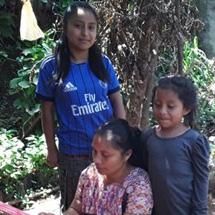
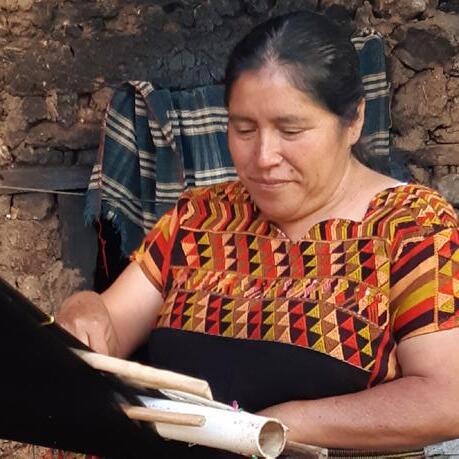


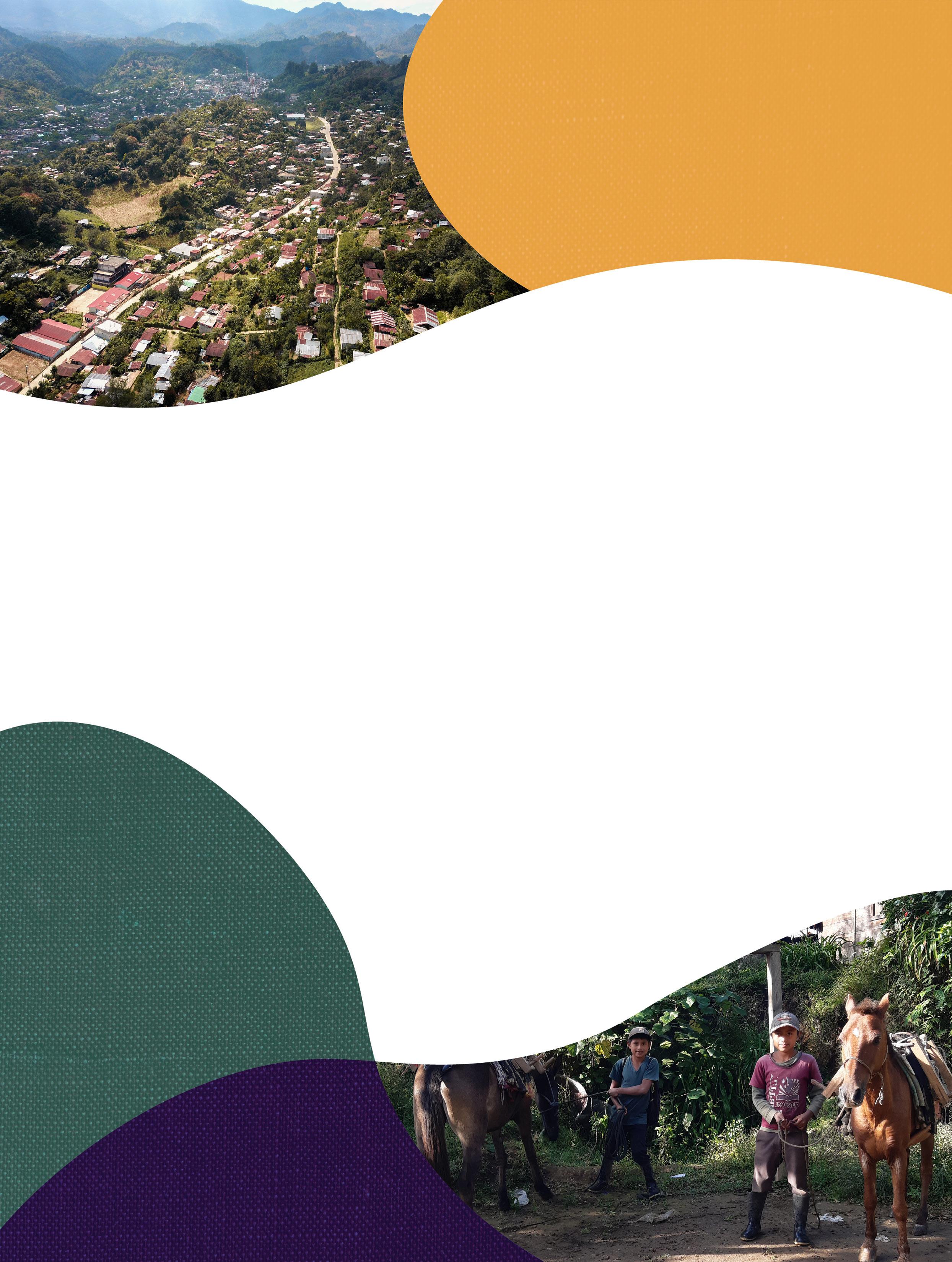
13,102 People
• 1,785 children under 5
• 3,921 school-aged children
• 2,516 households
• Livelihoods: subsistence farming, day labour, weaving

• Common foods: corn, beans, peas, tomatoes
• Avg. Daily Temperature: Highs 20-24°C, Lows 9-12°C
Cotzal was dragged through a 36-year civil war, resulting in decimated communities suffering from a loss of culture and trust.
• 76% of people suffer from chronic malnutrition
• education for children is undervalued
• 22% of students drop out or fail to move to the next grade
• 64.5% literacy rate
• agriculture produces low yields
• women lack opportunity to save or earn an income
• 2% of women participate in formal leadership
• most families live on less than $140 per month
• leadership lacks problem solving tools
What opportunities they have:
Local FH staff are building relationships with local leaders, pastors, mothers, and farmers. There is a desire for change and
Cotzal, Guatemala
Belize Mexico El Salvador Guatemala Nebaj
21 20 ISSUE 27 FHCANADA.ORG
Better Together
Written by Shelaine Strom and Eryn Austin-Bergen
Over the last three years, Food for the Hungry (FH) Canada has spearheaded an innovative and collaborative online platform called endingpovertytogether.org. In this virtual arena, over 40 Canadian organizations who participate in poverty alleviation contribute dynamic educational resources for Canadians in search of healthy ways to address poverty right here in our own country. One of the most exciting outcomes of endingpovertytogether.org has been the many unforeseen and life-giving partnerships that are flourishing between contributing organizations and FH. Who would have imagined that, as a result of such partnerships, FH would offer diverse training in the areas of Canadian food security, listening workshops, and even foster parenting?
But when you consider FH’s core poverty philosophy, it makes sense. FH believes that at the heart of poverty lies broken relationships—with God, self, others, and creation. Ending poverty, therefore, depends on reconciling and healing relational brokenness—whatever form it takes.
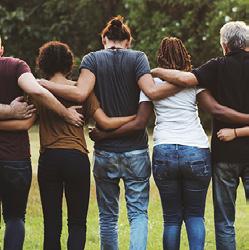
One recent partnership aimed at increasing Canadian food security is with Archway Community Services, who run the Abbotsford Food Bank. Archway sought out Ross Road Community Church (RCCC) to become the first satellite distribution point when they saw the need to expand their food distribution services. RRCC coordinated with FH to provide all potential volunteers with an adapted FH workshop on poverty.

When asked about FH’s training, Pastor Craig Thiessen said, “The Ending Poverty Together training helped us to think strategically about how we help people. It helped us to see our own poverty first so that we could come alongside our guests with humility rather than seeing ourselves as superior. We were challenged to think about long-term solutions instead of short-term fixes. And, perhaps above all, it encouraged us to enter into relationship with people rather than simply focusing on material needs.” Archway now plans to use this content to better equip individuals who desire to serve their community through Food Bank initiatives.
A second partnership to emerge is with Telecare Crisis and Caring Line, a listening ministry for people who need a safe person to talk to. Telecare provides training for phone line volunteers, and developed the Listen Up! in-person workshop which gives the community at large an opportunity to sharpen their listening skills. But doing in-person learning has become more challenging in these COVID-19 times. FH and Telecare quickly identified their shared core belief that learning to listen is foundational to reconciling relationships. It was a natural next step to partner together to develop an online version of Listen Up! set to launch in fall 2020.
A third unforeseen but truly powerful partnership arising from connections made through endingpovertytogether.org is with Forever Families of Canada. They are an organization passionate to see every Canadian church community empowered to effectively serve children and families in crisis. Poverty—in its fullest definition—is at the core of so much within Canadian child welfare. Executive Director, Wendi Park, says this of the joint training FH and Forever Families now
offer churches: “We desire to see an informed compassionate Church who not only relieves crises, but actively builds authentic community. FH gets it and has excellent facilitators with adaptable training content for global and local contexts. Partnering with FH has been refreshing because they are all about collaboration and working towards the greater good. We couldn't imagine working with another organization in equipping churches on poverty.”
END NG POVERTYTOGETHER
Fighting poverty can be exhausting, particularly if you feel like you’re alone in helping. That’s why endingpovertytogether. org has fostered a growing desire among organizations to work together. We’re sharing our areas of expertise, avoiding redundancies, and learning from each other. By partnering we gain wisdom and creativity from one another. The result? We create ways for Canadians to learn about the vast range of issues related to poverty, and the equally diverse responses available to them.
LEARN WITH US
Ending Poverty Together Workshop
An interactive workshop from a biblical foundation designed to help redefine the way you think about poverty—both causes and solutions—in Canada and abroad.


Understanding Yourself and Others Workshop
Your “personal style”, how you think and act, can be so different from another’s that ‘something’ just isn’t working. Understanding these can help your team—spouse, family, church, or business— succeed together.
visit fhcanada.org/Education.
endingpovertytogether.org

Have you checked out the over 400 resources pulled together on one site from over 40 organizations experienced in tackling poverty! You might just find the perspective, information, or solution you’re looking for.
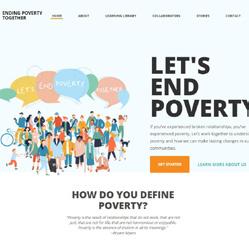
Listen Up Workshop
You appreciate a good listener, and there are times you want to be that for others. FH and Telecare Crisis & Caring Line have teamed up to offer a halfday, interactive online workshop to help you lend your ear.


 To sign up for or browse training events, or to request a workshop for your community,
To sign up for or browse training events, or to request a workshop for your community,
23 FHCANADA.ORG 22 ISSUE 27
WHAT WILL BE UNDER YOUR TREE?
FHCANADA.ORG/GIFTS

1-31741 Peardonville Road, Abbotsford,
1L2 1.8000.667.0605
BC V2T
info@fhcanada.org fhcanada.org


 Shawn Plummer President & CEO
Shawn Plummer President & CEO



 WRITTEN BY: COLTON MARTIN
WRITTEN BY: COLTON MARTIN


























































 To sign up for or browse training events, or to request a workshop for your community,
To sign up for or browse training events, or to request a workshop for your community,
